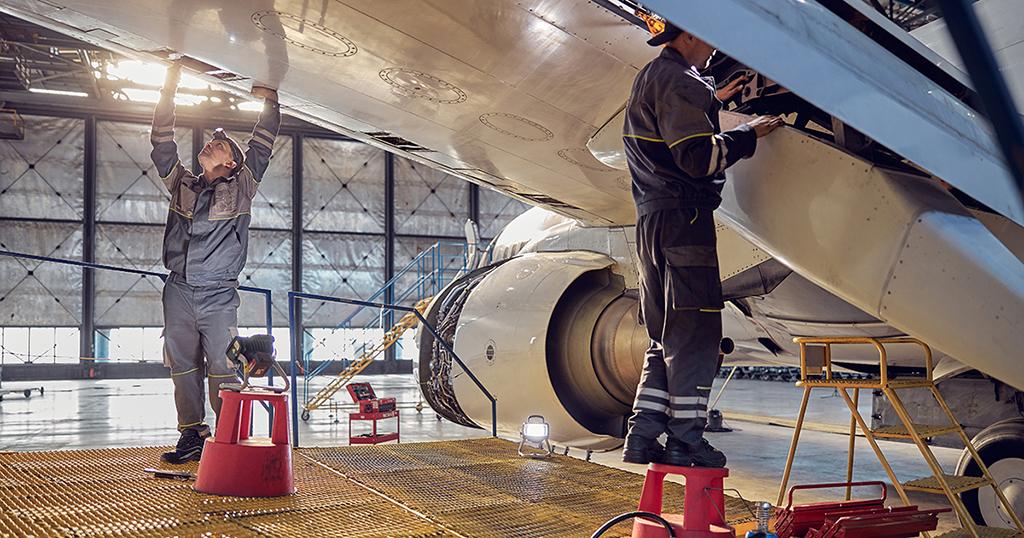Opinion: Optimized Aircraft Maintenance Helps Solve MRO Staff Shortage

Current and projected future technician shortages have airlines and MRO providers scrambling. As the entire industry grapples with the “supply side of the equation” to develop more technicians for the long term, in the short term aircraft operators should also focus on the “demand side of the equation.” That means they need to answer this question: “How can I continually reduce aircraft maintenance in the near term?”
Here’s the good news: Because every hour spent on an aircraft, directly or indirectly, is a result of a planned maintenance program, optimizations can reduce both immediate and long-term demand for MRO, with the added benefit of increased reliability.
Technician staffing shortages are especially acute in the regional aircraft segment, representing roughly 50% of the U.S. industry’s daily lift. The lower entry-point pay, ongoing attrition as experienced technicians move to mainline carriers and MRO service providers, and lack of depth in needed skill sets and expertise, combine to make this situation particularly painful. Attracting more aviation maintenance technicians to offset those retiring and leaving the field will take time and concerted effort. Meanwhile, MRO providers need actionable ways to keep aircraft flying safely.
Regional airline maintenance programs in aggregate have a total resource demand that is projected to be 39% higher than the total supply of technician labor (factoring in attrition, retirements and new hires) over the next 18 years. More alarming is that a significant shift toward this worsening situation will begin within the next three years. This means working to improve the technician supply side of the equation will not be the only feasible way to address this issue in the near term, and creative alternatives will be needed.
Proactive aircraft operators in all sectors of the aviation industry are taking action now by deploying SeaTec’s maintenance optimization programs expertise and proprietary tools. Since the maintenance program—directly or indirectly—drives every labor-hour of technician work, focusing on the demand side of the equation creates a tremendous near-term opportunity to close the supply-side gap.
For carriers that have not yet started optimizing their maintenance programs, we’ve found that optimization efforts of this type can lead to a nearly 18% reduction in demand. This represents nearly half of the supply gap created by the shortage of maintenance technicians (as in nearly 50% of the problem). While decreasing the labor-hours needed to do the job does not entirely solve the problem, we have found that it offers the single biggest lever to deal with this situation.
More attention should be given to maintenance resource management. Why isn’t this already happening? Historically, the industry has only prioritized reducing aircraft maintenance from a cost perspective, which narrows the focus to the largest cost-drivers, such as major assemblies like engines and landing gear. However, with long-duration on-wing time already built-in for these components, major assemblies do not drive the daily cost and operational churn of scheduled maintenance.
The original equipment manufacturers (OEM) design an initial maintenance program for each fleet type. Since no two airlines operate their airplanes in the same way, these programs are inefficient by design and become increasingly worse as aircraft age and more scheduled maintenance comes due. There is a natural tendency to remain with the initial OEM program and its maintenance planning documents containing all the maintenance review board requirements. This can generally be attributed to a lack of people, processes, data or expertise needed to support a change.
The irony about this situation is that the FAA has released guidance that requires aircraft operators to maintain an effective maintenance program customized to their unique operation, using specific data analysis. This is often misinterpreted by operators as meaning that the OEM’s program and subsequent revisions to it are the most effective and optimized program. However, the exact opposite can be true.
Optimizing your aircraft maintenance program offers the single largest opportunity to close the gap created by the technician shortage across the industry. This generates incredible value. Simply put, less maintenance means lower costs, reduced aircraft downtime and increased availability.
Allen McReynolds is managing partner and Jeff Pauls is vice president of engineering and technical services at SeaTec, a provider of consulting, engineering and software solutions for the aerospace and defense industry.
The views expressed are not necessarily shared by Aviation Week.

